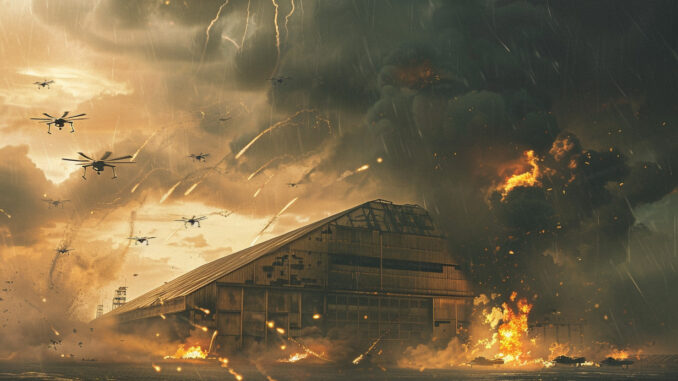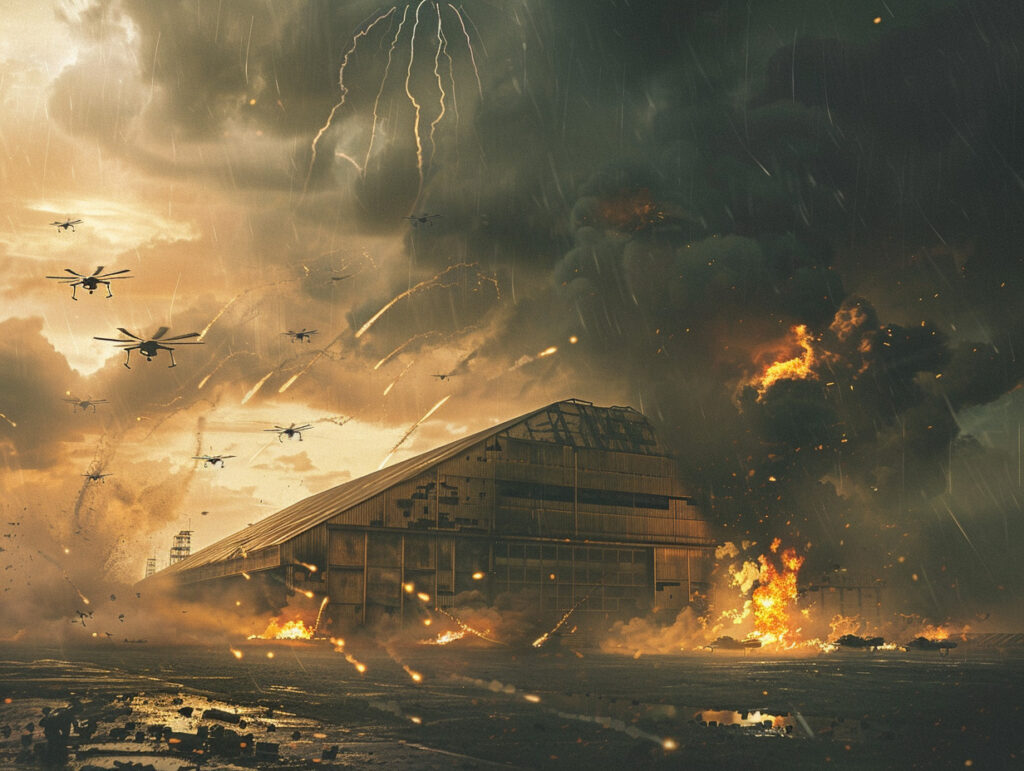
Analysis of the recent Ukrainian drone strikes against Russian ammunition depots, the strategic consequences and the technological responses of both sides.
Ukrainian forces recently carried out drone strikes against Russian ammunition depots, revealing Russia’s use of ground-to-ground and ground-to-air missiles. These actions demonstrate the evolution of Ukrainian capabilities in drone warfare and the importance of Western assistance in disrupting Russian operations. The Russian forces’ response included electronic countermeasures, demonstrating the growing complexity of the technological conflict between the two nations.
Ukrainian drone strikes against Russian ammunition depots
On the night of 6/7 July, Ukrainian forces carried out a drone strike against a Russian ammunition depot in Sergeevka, Voronezh oblast. According to the Ukrainian news agency Suspilne, the operation was carried out by the Ukrainian Security Service (SBU) and targeted a depot containing surface-to-surface missiles, surface-to-air missiles, ammunition for tanks and artillery, as well as light ammunition.
Geolocated images, published on 7 July and taken near Morozovka, show a column of smoke and explosions, confirming the impact of the strike. The governor of the Voronezh oblast, Alexander Gusev, said that Russian air defence systems had destroyed several Ukrainian drones over the region, causing debris that led to a fire and secondary explosions in a warehouse in the Podgorensky district.
NASA Fire Information for Resource Management System (FIRMS) data from 7 July detected anomalous heat signatures near Sergeevka, corroborating reports of strikes and explosions in the area.
Use of drones to disrupt Russian operations
Ukrainian forces also carried out a successful strike against a Russian regimental command post in Belgorod oblast in late June 2024, presumably with weapons supplied by the West. On 23 June, the Ukrainian General Staff reported that the Ukrainian air force had struck the command post of a Russian motorised rifle regiment in Nekhoteevka, near the Russian-Ukrainian border. Satellite images taken on 1 April and 28 June show significant damage to the building housing this command post.
It is likely that Ukrainian forces used a French Armement Air-Sol Modulaire Hammer precision bomb for this strike. The proximity of the command post to the front line in the north of Kharkiv oblast suggests that it was involved in ongoing Russian offensive operations. This attack demonstrates Ukraine’s ability to carry out precise strikes on Russian military targets inside Russian territory using weapons supplied by the West, thereby disrupting Russia’s offensive capabilities.

Improving Ukrainian drone capabilities
Ukrainian drone operators are improving their ability to intercept Russian long-range drones in flight, which could relieve pressure on short- and medium-range air defence assets if they are deployed on a large scale. A video released on 1 June shows Ukrainian forces using subjective view (FPV) drones to strike a Russian Zala tactical drone and an Orlan-10 medium-range reconnaissance drone in flight in the Velyka Novosilka region.
On 29 June, the Kharkiv group of forces published images showing a Ukrainian FPV drone intercepting a Russian Lancet prowler munition in flight. Both sides appear to be improving their ability to use FPV UAVs to intercept other UAVs at a tactical level, but there is as yet no confirmation that Russian forces are using FPV UAVs to strike Ukrainian prowler munitions or long-range reconnaissance UAVs in flight.
Improving the capabilities of Ukrainian FPV UAVs on a large scale would degrade Russian reconnaissance and strike complexes while conserving expensive and scarce air defence interceptors for larger and more significant Russian air targets.
Reactions and implications for Russian forces
Russian forces have used constraints on Ukrainian air defence assets in recent months to operate fixed-wing reconnaissance drones more freely in Ukraine, including in deep rear areas. This has probably allowed Russian forces to improve their reconnaissance and strike complexes.
However, a robust Ukrainian capability to use inexpensive and widely available UAVs to intercept more expensive Russian reconnaissance UAVs on a large scale would degrade Russian reconnaissance and strike capabilities. This offensive-defensive technological capability is crucial if Ukraine is to offset Russia’s current material advantages.
Recent events highlight the growing importance of drones in modern conflicts. Ukrainian drone strikes against Russian targets demonstrate the evolution of Ukrainian military capabilities and the significant impact of Western assistance. The Russian response, including sophisticated electronic countermeasures, underlines the complexity of this technological warfare. The continued development of drone capabilities on both sides is crucial to determining the outcome of this conflict, with major strategic implications for regional and global security.
War Wings Daily is an independant magazine.